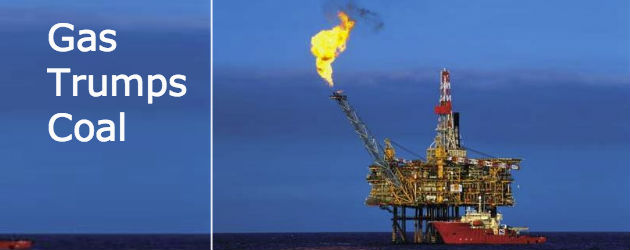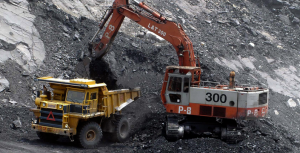Natural Gas Dethrones King Coal As Power Companies Look To Future
 Courtesy of NPR by Christopher Joyce: The way Americans get their electricity is changing. Coal is in decline. Natural gas is bursting out of the ground in record amounts. And the use of wind and solar energy is growing fast. All this is happening as power companies are trying to choose which kind of energy to bet on for the next several decades.
Courtesy of NPR by Christopher Joyce: The way Americans get their electricity is changing. Coal is in decline. Natural gas is bursting out of the ground in record amounts. And the use of wind and solar energy is growing fast. All this is happening as power companies are trying to choose which kind of energy to bet on for the next several decades.
Until recently, half of these plants burned coal to make electricity. Now, that’s down to about one-third. Since 2010, about 150 coal plants either have been retired or it’s been announced they will be retired soon.
What knocked King Coal off its throne? Mostly natural gas. “We added almost twice as much natural gas capacity as we retired coal capacity last year,” says Trevor Houser, an energy analyst with the Rhodium Group in New York. Why gas? “That is primarily because of the price.”
 The price of natural gas is well below what it was a few years ago. That’s mostly because hydraulic fracturing technology is reaching more gas reserves, and also because a weak economy has lowered the demand for electricity. And there’s plenty more gas to come. On Thursday, a study from the University of Texas confirmed government estimates of huge reserves in Texas alone.
The price of natural gas is well below what it was a few years ago. That’s mostly because hydraulic fracturing technology is reaching more gas reserves, and also because a weak economy has lowered the demand for electricity. And there’s plenty more gas to come. On Thursday, a study from the University of Texas confirmed government estimates of huge reserves in Texas alone.
That would suggest that coal is doomed.
 But not so fast. The gas market is quirky. As people started burning more natural gas, gas prices crept up. It’s classic economics: “As natural gas prices have started to increase over the past few months,” Houser points out, “coal’s share of U.S. power generation has increased right alongside it.”
But not so fast. The gas market is quirky. As people started burning more natural gas, gas prices crept up. It’s classic economics: “As natural gas prices have started to increase over the past few months,” Houser points out, “coal’s share of U.S. power generation has increased right alongside it.”
Natural Gas Giant Tries To Shift Gears
So this is the brave new energy world of the 21st century — two evenly matched opponents. Natural gas is providing 30 percent of our electricity, with coal a half-dozen percentage points above that, trying to halt its downward spiral. Add in electricity powered by water, wind and solar — which, collectively, have surged to now provide about 12 percent of our power — and you’ve got heated competition for access to your wall socket.
The future of electric power is at stake. Coal plants are closing. Nuclear power is not growing. The economy is picking up. That means more demand for electricity.
“In the last five years or so, there’s been an increasing degree of concern in the industry that we need to start building new capacity,” says Revis James, who analyzes the market for the utility industry’s Electric Power Research Institute.
New capacity — new power plants — will determine the kind of energy Americans use for the next 50 years or so. Natural gas would seem the economical choice. But here’s the rub: The actual cost of the gas — rather than the cost of building the equipment to burn it — accounts for about half a utility’s operating cost. That’s way more than coal or uranium fuel. So when gas prices fluctuate (and they’re famous for doing that) it can wreck a utility’s bottom line. “The real $64,000 question,” James says, is, ‘What will happen to gas prices as the power sector’s consumption of gas starts to significantly increase?’ ”
And once you build those gas-fired plants, you’re stuck with them for decades. You have to pay back the cost of building the plant. James says that’s why power companies are nervous about jumping on the gas bandwagon when gas prices are so volatile.
Bruce Nilles is hoping they don’t jump on that wagon. Nilles is a lawyer with the Sierra Club, which has spent the past decade fighting permits for new coal plants.
Nilles agrees that using more natural gas has reduced the country’s climate-warming carbon emissions. But, he says, don’t build any more. That could divert the country away from the cleanest energy — wind, solar and geothermal power. “What we’re trying to avoid,” Nilles says, “is building hundreds of new gas plants, locking us in for the next 20, 30 years, and thereby making it impossible to make a swift transition to clean energy.”
Nilles says it’s a race — coal is slowing down, renewable forms of energy are closing the gap, and natural gas is a dark horse coming up on the outside.
Category: Fuel & Oil, General Update, Transit News










